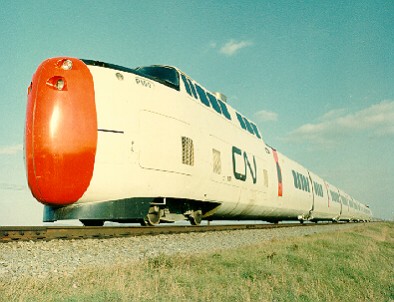
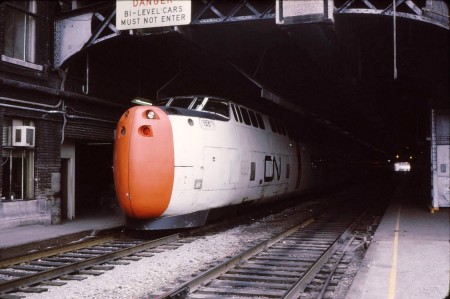
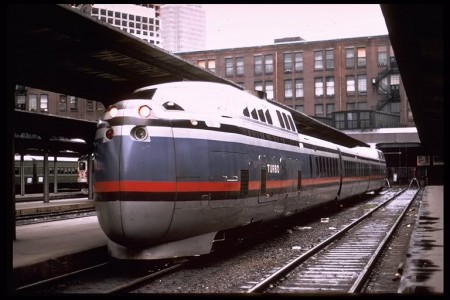
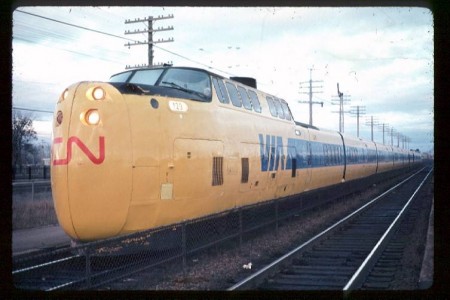
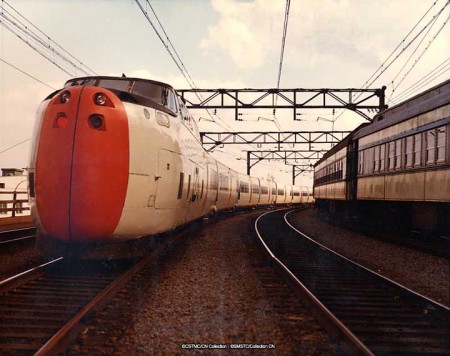
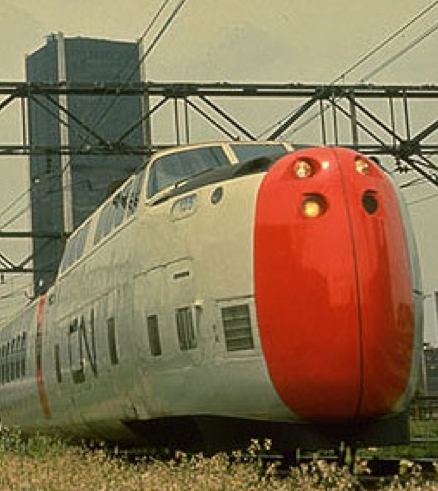
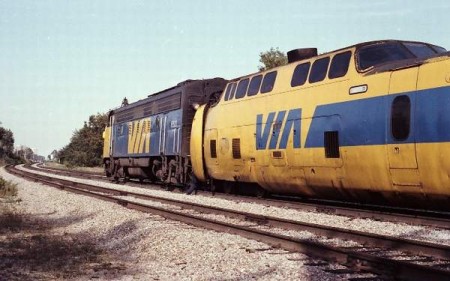
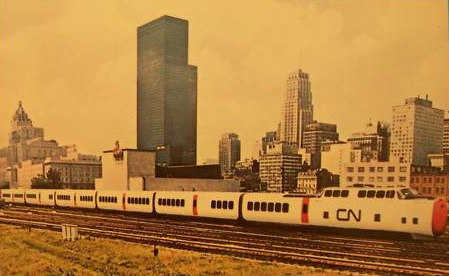
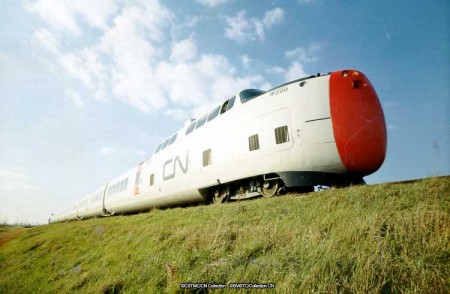
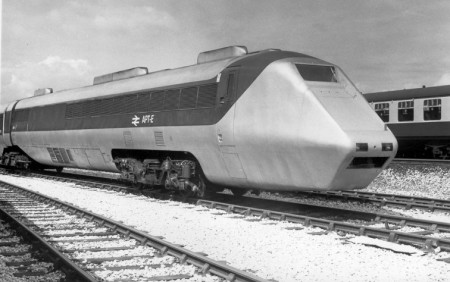
Stumbled onto this interesting find while putting together the CN logo post. The CN Turbotrain was a high-speed train build in the late 1960’s. Really interesting lines and I loving the paint on these. I think that last one (B&W) is some earlier version or prototype.
CN Turbotrain
10.05.2011



Last one has the National Rail logo (British) so might be a 125 prototype.
PS. I’m not a train spotter.
Last one looks like the french TGV.
Should be after the ’60s, likely ’70s.
The design is clearly sharper than the turbotrain’s.
PS. I’m not a train spotter. 🙂
Here’s a video showing off the interior – which is awesome. http://www.youtube.com/watch?v=vhlh7JJVc50
Very cool! No beg-to-differ needed. Great reference pics.
The last one is British Rail’s APT (Advanced Passenger Train), which only ever got to prototype stage…
):
These are from the 60s? They look so cool! Way better than the tin cans we have here in Sydney, which are from the 70s/80s…
Propeller trains were a really interesting idea explored in the early part of the 20th century, like George Bennie’s “Railplane”: http://en.wikipedia.org/wiki/File:The_George_Bennie_Railplane_System_of_Transport_poster,_1929.png
and the German Schienenzeppelin: http://en.wikipedia.org/wiki/Schienenzeppelin
Looks like the 1st link is messed up, here’s a better one: http://hu.wikipedia.org/wiki/Bennie_Railplane
Living in Canada my whole life, and I’ve never seen these pictures… what an amazing looking piece of engineering.
Yay, Canadian Railway Logos ! I also like the
GO Transit Logo: http://en.wikipedia.org/wiki/GO_Transit
and the VIA Railway one (shown in a couple of the photos) :
http://en.wikipedia.org/wiki/Via_Rail
which is just a brilliant verbal pictogram of switching tracks
Train nerd of yore here. Love the CN TurboTrains™ I think I’d seen them before and thought they were Japanese Bullet trains.
Last one is indeed the UK ‘A.P.T.’ prototype – which in fact did get developed into a full service tilting train in the early eighties – except it was fraught with problems (the tilt made people feel sick for one) and pulled almost as soon as it was introduced.
Ironically the Brits sold the technology to the italians who refined it and sold it back to Virgin trains in the UK on their ‘Pendolino’ trains
The non-prototype also looked cool, though not nearly as futuristic:
Full APT info for anyone that cares… (Really? No-one? 🙂
Links no working in last post (or are they denied?
Pic: http://images-02.delcampe-static.net/img_large/auction/000/125/996/446_001.jpg
Wiki: http://en.wikipedia.org/wiki/Advanced_Passenger_Train
The last B/W picture of the turbo train was the English version trialled in the 1970’s. It was the forerunner of the HST. It’s sister train was the APT which was electric powered.
Scott, you’d probably enjoy this:
http://www.youtube.com/watch?v=ETYDiT4h4oU
Great visuals of the Train.
The last picture is of British Rail’s APT-E (Advanced Passenger Train – Experimental) prototype, a turbine-powered tilt-train.
It eventually led to an electrified version which, interestingly, had the locomotive in the middle of the train (so it had no cab and looked like a baggage car).
The CN turbo was moderately successful; after several years of teething problems, it ran daily between Montréal and Toronto. Designed for 200 km/h, it was restricted to 160 because of the signalling system which was not upgraded. Also in question is the dubious wisdom of running such fast trains on a 500 km-long line which has 300 grade crossing (many of them not even protected by gates), and indeed, on it’s inaugural run, it hit a truck at a crossing.
Turbo’s ride quality was poor thanks to the passive “pendulum” suspension that rocked in the curves. At each extremity was a dome car right next to the control cabs; on one end, a second class lounge was installed, and on the other end, 8 first-class passenger could enjoy the ride right next to the train engineer.
But Turbo was doomed by it’s oddballness; it was an unmodifiable articulated trainset (just like the wildly successful TGVs) which could not be lengthened or shortened to suit demand, a concept that did not jive well with the operating practices of the time, so it was eventually replaced by much more conventional LRC tilt-trains in the early 1980’s. (The LRC is the first successful tilt train to enter widescale service).